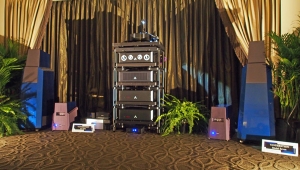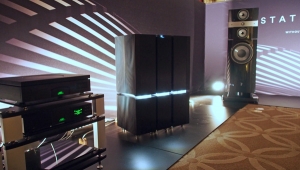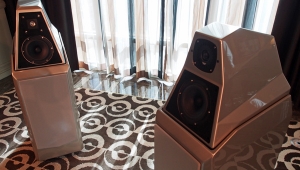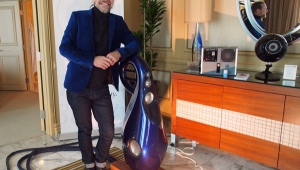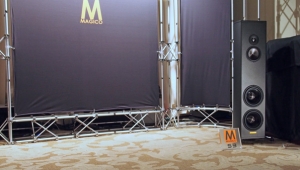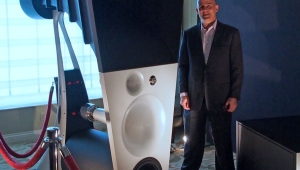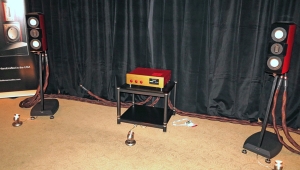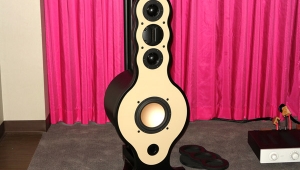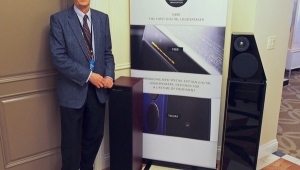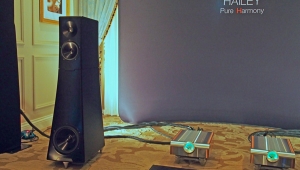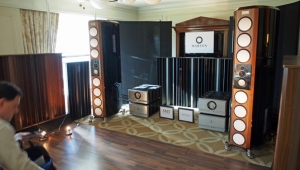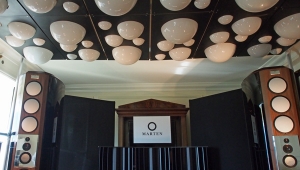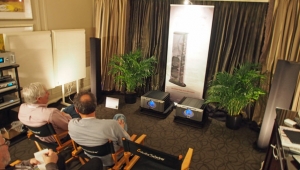| Columns Retired Columns & Blogs |
Pass Labs Pays Tribute to Sony
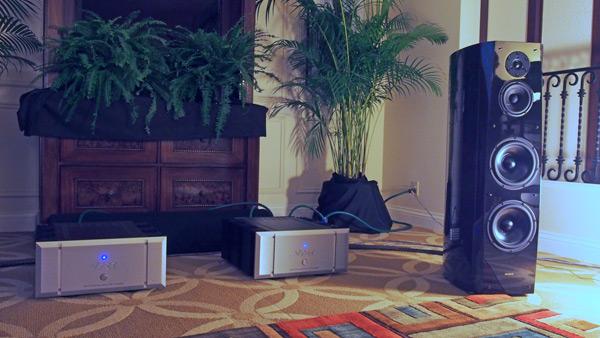
“A kiss back to Sony,” was how Nelson Pass described the debut of a unique pair of Pass Labs monoblocks driving Sony’s SS-AR1 speakers in the Sony room at Venetian. And it was an affectionate kiss indeed—the sound in this room, with a Pass Labs XP-20 preamplifier and Sony’s HA-P1ZES media player, I thought one of the best of the 2014 CES. Yes, it had superb clarity and dynamics, with an impossibly low noisefloor on the 24/176.4k Reference Recordings file of Stravinsky’s Firebird, but these qualities were even apparent on a Red Book file of a Rossini opera excerpt. There was something just right about the sound.
1 To avoid confusion with MOSFETs, devices with a vertical rather than lateral structure are now called Static Induction Transistors or SITs.
As mentioned in our report from the 2013 Burning Amp Festival, the veteran designer showed his "simplest amp," created with “two transistors, a [Jensen] transformer and wire—the fewest parts he'd been able to use to make it work.” The transistors weren’t identified back then but it turned out that they were Sony Vertical Field Effect Transistors or VFETs (footnote 1), a device Sony had developed 1972 to mimic the transfer function of a 300B triode tube. Sony and Yamaha both made amplifiers using this unique device, but discontinued them in the early 1980s when lower-priced power MOSFETs became available soon after.
Nelson’s Burning Amp used two complementary VFETs, part numbers 2SK82 and 2SJ28, the only ones Nelson had to hand, but he then set to work finding more. Eventually, he uncovered a stash in Singapore and bought all of them, enough to make the single pair of “Sony VFET Amplifier 40 Year Commemorative Edition” amplifiers at CES. This uses 24 pairs of VFETs as complementary followers and front-end/driver circuitry based on a Pass Labs’ XP topology. Output power is specified as 250W into 8 ohms—it sounded like more!
1 To avoid confusion with MOSFETs, devices with a vertical rather than lateral structure are now called Static Induction Transistors or SITs.
- Log in or register to post comments

